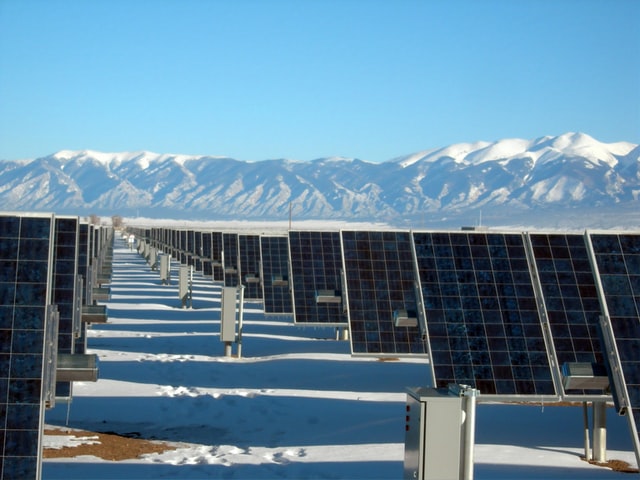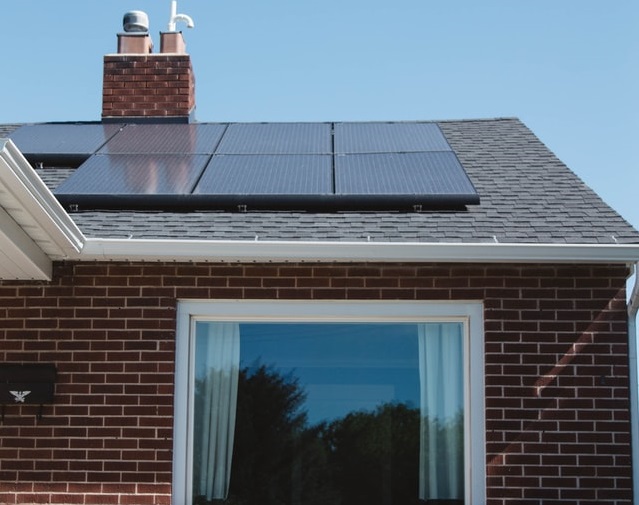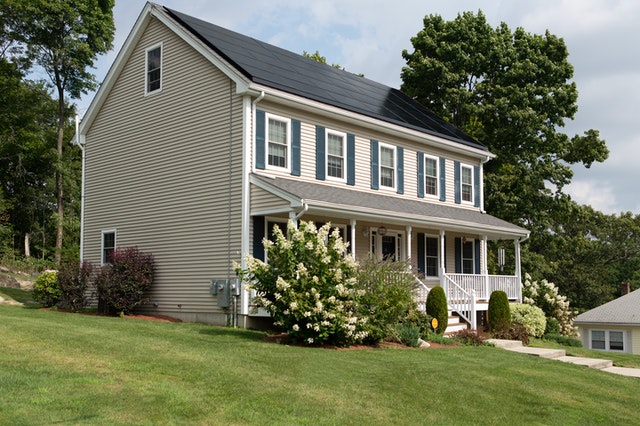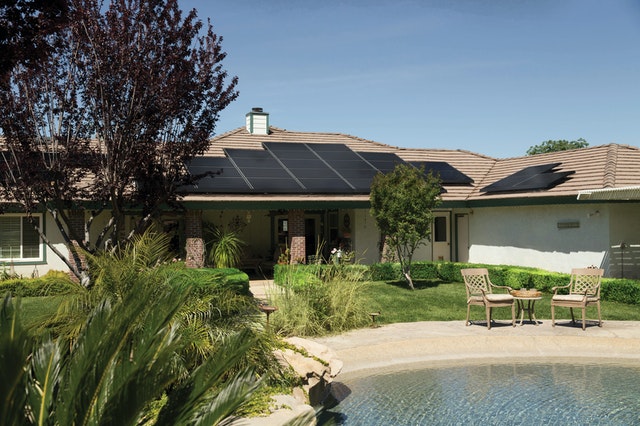Distributed photovoltaic power generation is a new type of power generation and energy comprehensive utilization mode with broad development prospects. It is different from the traditional centralized power generation (thermal power generation, etc.), advocating the principle of nearby power generation, grid connection, conversion and use; It can not only effectively provide the power generation of the same scale system, but also effectively solve the problem of power loss in boost or long-distance transportation.

What are the advantages of photovoltaic power generation?
Economical and energy-saving: generally self-use, surplus electricity can be sold to the power supply company through the national grid, and when it is insufficient, the electricity will be supplied by the grid, which can save electricity and receive subsidies;
Heat insulation and cooling: In summer, it can be insulated and cooled by 3-6 degrees, and in winter it can reduce heat transfer;
Green and environmental protection: In the process of power generation, distributed photovoltaic power generation projects have no noise, no light pollution, and no radiation. It is a real static power generation with zero emissions and zero pollution;
aesthetic: The perfect combination of architecture or aesthetics and photovoltaic technology makes the entire roof look beautiful and atmospheric, with a strong sense of technology, and enhance the value of the real estate itself.
If the roof does not face south, is it impossible to install photovoltaic power generation systems?
Photovoltaic power generation systems can be installed, but the power generation is slightly less, and the power generation varies according to the direction of the roof. It is 100% for south, 70-95% for east-west, and 50-70% for north.

Do I need to do it myself every day?
No need at all, because the system monitoring is fully automatic, it will start and close by itself, without manual control.
Is the light intensity the power generation of my photovoltaic system?
The intensity of light is not equal to the electricity generated by the local photovoltaic system. The difference is that the power generation of the photovoltaic system is based on the local light intensity and multiplied by an efficiency factor (performance ratio) to get the actual power generation of the local photovoltaic system. This efficiency system is generally below 80%, close to 80% the system is a relatively good system. In Germany, the best system may achieve a system efficiency of 82%.
Does it affect the power generation capacity on rainy or cloudy days?
influential. The amount of power generation will be reduced, because the light time is reduced and the light intensity is relatively weakened. But our estimated annual average power generation (for example, 1100 kWh/kw/year) is achievable.
On rainy days, the photovoltaic system has limited power generation. Will my household electricity be insufficient?
No, because the photovoltaic system is a power generation system that is connected to the national grid. Once photovoltaic power generation cannot meet the owner’s electricity demand at any time, the system will automatically remove electricity from the national grid for use.
If there is dust or rubbish on the surface of the system, will it affect the power generation?
The impact is small, because the photovoltaic system is related to the sun’s irradiance, and non-obvious shadows will not have a significant impact on the system’s power generation. In addition, the glass of the solar module has a surface self-cleaning function, that is, in rainy days, rain water can wash away the dirt on the surface of the module. Therefore, the operation and maintenance cost of the photovoltaic system is very limited.
Does the photovoltaic system have light pollution?
No. In principle, the photovoltaic system uses tempered glass coated with anti-reflection coating to maximize light absorption and reduce reflection to increase power generation efficiency. There is no light reflection or light pollution. The reflectivity of traditional curtain wall glass or automotive glass is 15% or above, while the reflectivity of photovoltaic glass from first-line module manufacturers is below 6%. Therefore, it is lower than the light reflectivity of glass in other industries, so there is no light pollution.

How to ensure the efficient and reliable operation of photovoltaic systems for 25 years?
First, strictly control quality in product selection, and must choose first-line brand component manufacturers, so as to ensure from the source that there will be no problems with component power generation for 25 years:
①The module’s power generation is guaranteed for 25 years to ensure the efficiency of the module.
②Have a national laboratory (cooperate with the strict quality control system of the production line).
③Large scale (the larger the production capacity, the larger the market share, and the more obvious economies of scale).
④ Strong goodwill (the stronger the brand effect, the better the after-sales service).
⑤Whether they only focus on solar photovoltaics (100% photovoltaic companies and companies that are just subsidiaries doing photovoltaics have different attitudes towards industry continuity). In terms of system configuration, you must choose the most compatible inverter, combiner box, lightning protection module, distribution box, cables, etc. to match the components.
Second, in terms of system structure design and fixing to the roof, choose the most suitable fixing method and try not to damage the waterproof layer (that is, the fixing method without expansion bolts on the waterproof layer). Even if it is to be repaired, there is a hidden danger of future water leakage. In terms of structure, we must ensure that the system is strong enough to cope with extreme weather such as hail, thunder and lightning, typhoon, and heavy snow, otherwise it will be a hidden danger to the roof and property safety for 20 years.
How safe is home photovoltaic power generation? How to deal with problems such as lightning strikes, hail, and electricity leakage?
First of all, DC combiner boxes, inverters and other equipment lines have lightning protection and overload protection functions. When abnormal voltages such as lightning strikes, leakage, etc. occur, it will automatically shut down and disconnect, so there is no safety issue. In addition, all metal frames and brackets on the roof are all grounded to ensure the safety of thunderstorms. Secondly, the surface of our photovoltaic modules are all made of super impact-resistant tempered glass, and they have been subjected to harsh tests (high temperature and humidity) when they are certified by the European Union ,general climate is difficult to damage the photovoltaic panels.
What equipment does distributed photovoltaic power generation include?
Main equipment: solar panels, inverters, AC and DC distribution boxes, photovoltaic meter boxes, brackets;
Auxiliary equipment: photovoltaic cables, AC cables, pipe clamps, lightning protection belts and lightning protection grounding, etc. Large-scale power stations also need other auxiliary equipment such as transformers and power distribution cabinets.




 2021-05-20
2021-05-20


















